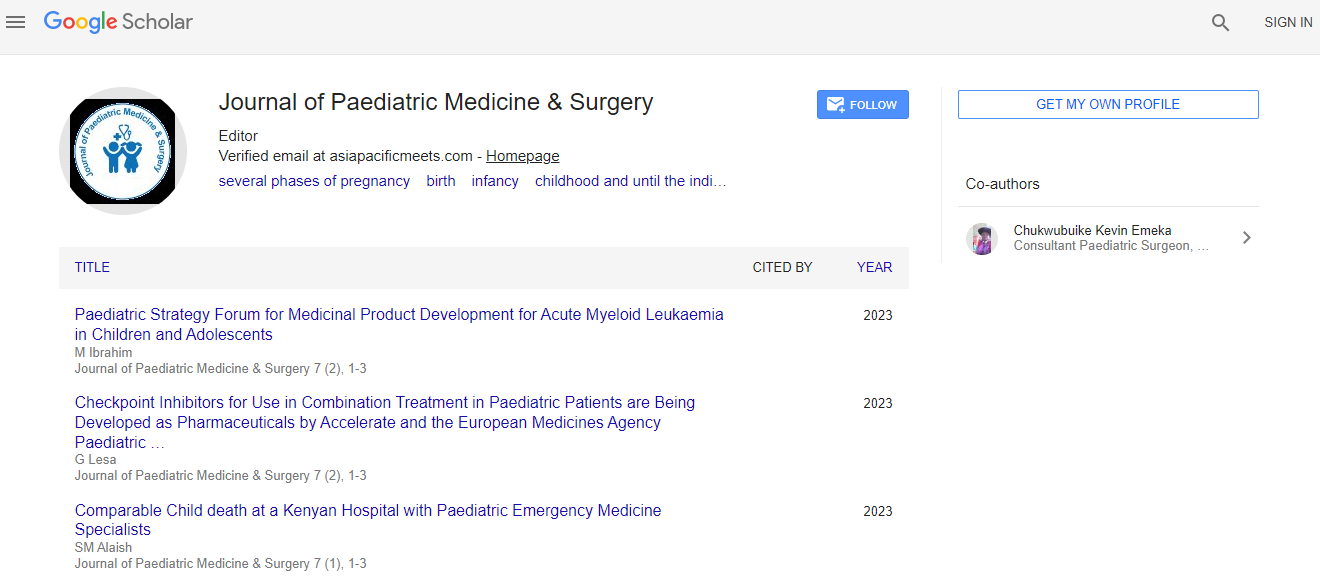Psychiatry Neuro 2018: The impact of mental illness in UAE society - Najiha Syeda - Dwight School Dubai
*Corresponding Author:
Copyright: © 2018 . This is an open-access article distributed under the terms of the Creative Commons Attribution License, which permits unrestricted use, distribution, and reproduction in any medium, provided the original author and source are credited.
Abstract
Congenital neural tube defects (NTD) are communal malformations both as an isolated form and a part of genetic syndromes. Extremely fast development of molecular genetics confirms that almost all NTD are genetically dependent in terms of aberrations in different regions of a chromosome or single gene mutations. On the other hand, NTD are an important component of diverse genetic diseases, including monogenic and metabolic disorders with mutations (often called polymorphism) genes responsible for the condition of the MTHFR gene. The genes participating therein are located near on each chromosome, mainly on pathways, along with ligand genes and co-factors, transcription factors or individually. Several mechanisms on NT development are based on the balance between apoptosis, proliferation and migration. Crucial genes regulatory fetal development, including the creation of neural tube and the forming of vertebral continuity are primary home box genes grouped in 4 clusters HOX1-4. Other genes condition the forming of different structures. The most important pathways are Shh, Wnt, FGF, Notch, and BMP. Instead of recognition that periconceptional folic acid supplementation in reproductive age women decreases the risk of fetal neural tube defects (NTDs), these malformations remain as the second most collective serious fetal birth defect in the United States, are mostly surpassed only by congenital heart defects. Methods castoff to detect neural tube defects are now a component of routine obstetrical care, and include both second trimester maternal serum alpha-fetoprotein (MSAFP) levels and fetal ultrasonographic evaluations. Once an NTD is finds as a various management options are available for families, including consideration of pregnancy termination, in utero fetal surgery, as well as referral to a tertiary care center for management and delivery. Therefore, it is useful for the practicing obstetricians to be aware of these complex diagnostic and management options for optimal care of the obstetric patient and fetus.1 In this chapter, the etiologies, antenatal diagnosis, and management, as well as information regarding prevention are find out. All pregnant women have the possibility to undergo prenatal screening/diagnosis for genetic conditions and/or birth defects. Specific signs for genetic counselling and prenatal diagnosis options include a history of chromosome abnormality, Mendelian genetic disorder, or metabolic disorder; increased risk for neural tube defect; abnormal maternal serum screening test; or a fetal anomaly suspected/diagnosed on ultrasound. Fruitful prenatal diagnosis requires a known condition associated with a structural abnormality visible in the fetus, a biochemical abnormality in amniotic fluid/amniocytes, or a known molecular mutation. Preimplantation genetic screening/diagnosis selects out embryos with a genetic condition or aneuploidy and transfers either chromosomally normal embryos or embryos without the at-risk genetic condition.
These pathways are closely connected with other structures of the body, like conus heart, thymus, intestinal tract, skin or sympathetic nervous system. The most complicated is closing of column. On the one hand, this process does not depend on one but on numerous genes, especially Pax3 and Pax7 and on the other hand, it depends on proper work mainly of folic acid path, as well as vitamin B12 and choline. The brain and spinal cord of a growing fetus develop from a simple structure called the neural tube. The neural tube ‘zips up’ along its length to close and protect the brain and spinal cord. If the neural tube doesn’t close at any part along its length, the baby will have a neural tube defect.
A range of genetic and environmental factors are thought to be responsible for NTDs, including the mother having not enough of the vitamin folate and some epilepsy medications. Taking folate (folic acid) before and during early pregnancy can suggestively decrease the chance that a mother will have a baby with this kind of birth defect. Neural development is also affected by the imprinting (about 30 genes) and the inactivation of the X chromosome in day 21st of embryo development. In our daily prenatal practice we are able to find specific NTD as soon as 12th week of gestation but our target is to confirm if NTD may be of truly remote nature or not particular mild ultrasound co-markers. As you can see above, we have a lot of information and we can prevent many open NTD, but still affected children are born. It means that our knowledge about it is not yet complete. Presently, we have some possibilities to help the baby in uterus to close peripheral open NT if it??? Not too big and has isolated nature.

 Spanish
Spanish  Chinese
Chinese  Russian
Russian  German
German  French
French  Japanese
Japanese  Portuguese
Portuguese  Hindi
Hindi 